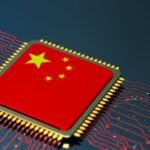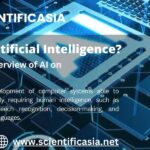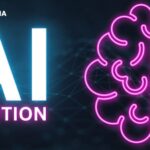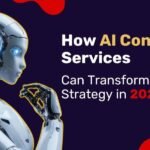The Significance of AI in Education
Artificial Intelligence (AI) has emerged as a transformative force in education, redefining how students learn and interact with knowledge. By personalizing learning experiences, AI enables tailored educational paths that cater to individual strengths and weaknesses. For instance, students can benefit from AI-driven platforms that adapt lessons in real-time, making learning more engaging and effective.
Overview of AI’s Impact on Future Careers
As AI continues to evolve, its influence on future careers becomes increasingly significant. Industries are integrating AI technologies, creating a demand for skilled professionals adept at navigating this new landscape. Key impacts include:
- Emergence of new job roles centered around AI.
- Enhanced efficiency and productivity in existing jobs.
- An emphasis on interdisciplinary skills combining technology with traditional professions.
In this rapidly changing environment, preparing for AI-driven careers is essential for students today.
AI Technologies Shaping Students’ Future Careers
Machine Learning and Its Applications
Machine learning stands at the forefront of AI technologies, allowing systems to learn from data and make predictions. This technology has profound implications for various fields, from healthcare to finance. For instance, students studying machine learning can analyze massive datasets to develop models that predict patient outcomes or optimize resource allocation. However, understanding complex machine learning concepts can be challenging, which is where assignment help for students can be invaluable in guiding them through their coursework and projects.
Natural Language Processing for Career Development
Natural Language Processing (NLP) is another exciting branch of AI that empowers computers to understand and respond to human language. In career development, NLP applications, like resume screening and chatbots, are becoming commonplace. Imagine a student crafting their resume with real-time feedback from an AI-powered tool ensuring they highlight the right skills.
Robotics and Automation in Education
Lastly, robotics and automation are reshaping educational environments, fostering hands-on experience. Schools are integrating robotics programs, enabling students to engage directly with technology. For example, students involved in building robots learn vital skills such as programming, teamwork, and problem-solving—competitive advantages for their future careers.
These AI technologies not only enhance learning but also prepare students for a job market that leans heavily on innovation and technical expertise.
Opportunities Created by AI for Students
Personalized Learning Paths
The advent of AI in education has unlocked doors to personalized learning paths. This means that no two students learn the same way anymore. For example, platforms like Khan Academy utilize AI algorithms to assess a student’s strengths and weaknesses, adjusting the curriculum to fit their unique needs.
Skill Development and Training
Moreover, AI fosters skill development and targeted training. Students can engage with interactive simulations or online modules designed to cultivate specific skills—whether it’s coding, data analysis, or creative thinking.
Enhanced Career Guidance
Additionally, AI provides enhanced career guidance tailored to individual aspirations. Sophisticated career guidance systems analyze students’ interests and suggest suitable career paths, ensuring they embark on journeys aligned with their passions.
Overall, these AI-driven opportunities empower students to take charge of their education, preparing them for success in a future job market.
Challenges Facing Students in AI-Driven Future Careers
Job Displacement and Automation
While AI opens new doors, it also presents significant challenges, such as job displacement and automation. Many traditional roles face the risk of being replaced by AI systems, leading to concerns among students entering the workforce. For instance, positions in manufacturing and data entry are increasingly automated, requiring students to be proactive in adapting to these changes.
Ethical Concerns in AI Implementation
Another critical challenge involves ethical concerns surrounding AI implementation. Issues such as data privacy, algorithmic bias, and the transparency of decision-making processes are gaining attention. Students need to understand these ethical dilemmas to navigate the complexities of an AI-driven world effectively.
Skills Gap and Education Inequality
Lastly, the skills gap and education inequality pose substantial hurdles. Not all students have equal access to AI education and resources, widening the gap between those who can thrive in AI careers and those who cannot. Ensuring equitable access to quality education and training is essential for preparing all students for the future.
By recognizing these challenges, students can better equip themselves to overcome obstacles and seize the opportunities that AI presents.
The Role of Educational Institutions in Preparing Students for AI Careers
Integrating AI Curriculum
To prepare students for AI careers effectively, educational institutions must integrate a robust AI curriculum. This involves not just theoretical knowledge, but also practical applications. Courses should cover essential topics like machine learning, data analysis, and ethical considerations.
Providing Practical Experience
Additionally, offering practical experience is crucial. Programs can include hands-on projects, internships, and AI-focused clubs. For example, students might work on real-life AI challenges, honing their skills while collaborating with peers.
Collaborations with Industry Partners
Lastly, partnerships with industry leaders can enhance educational outcomes. By collaborating with tech companies, schools can provide students with exposure to current trends, tools, and workplace environments, bridging the gap between education and employment.
Incorporating these strategies ensures students are not only prepared for AI careers but are also positioned to excel in a rapidly evolving job market.
Strategies for Students to Thrive in AI-Driven Job Market
Continuous Learning and Adaptability
To thrive in the AI-driven job market, students must prioritize continuous learning and adaptability. The tech landscape evolves rapidly, and staying updated on industry trends is crucial. Engaging in online courses, attending workshops, or even participating in hackathons can provide valuable insights into emerging technologies.
Developing Critical Thinking and Problem-Solving Skills
Additionally, developing strong critical thinking and problem-solving skills is essential. Employers seek candidates who can analyze complex data and devise innovative solutions. Participating in group projects or case studies can foster these skills while encouraging creative collaboration.
Building a Strong Professional Network
Lastly, building a robust professional network cannot be overstated. Connecting with industry professionals through platforms like LinkedIn, attending networking events, or joining relevant forums can lead to mentorship opportunities and job openings.
By employing these strategies, students can confidently navigate the AI-driven job market and position themselves for success.
Conclusion
Recap of AI’s Influence on Future Careers
As we’ve explored, AI is undeniably shaping future careers in multifaceted ways. From personalized learning paths to automated job roles, its influence is profound. Students today are presented with unique opportunities that empower them to excel in an increasingly tech-driven world.
Looking Ahead: Navigating the AI Revolution
Looking ahead, navigating the AI revolution requires a proactive approach. Emphasizing continuous learning, ethical considerations, and collaboration will be key in harnessing AI’s potential. By equipping themselves with the right tools and mindset, students can not only adapt but thrive in this dynamic landscape, ultimately turning challenges into opportunities for a brighter, AI-enhanced future.
















